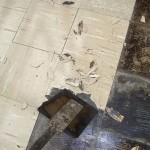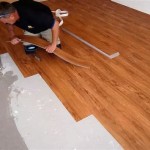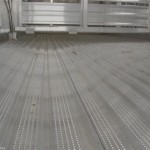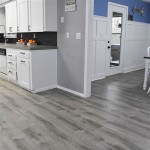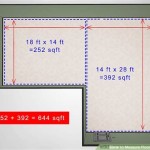```html
White Engineered Wooden Flooring: A Comprehensive Overview
White engineered wooden flooring has gained considerable popularity in recent years, becoming a sought-after choice for homeowners and designers alike. Its aesthetic appeal, combined with the practical advantages of engineered wood, makes it a versatile and desirable flooring option. This article delves into the characteristics, benefits, selection criteria, installation, and maintenance aspects of white engineered wooden flooring, providing a comprehensive understanding of this flooring material.
Engineered wood flooring, unlike solid wood flooring, is composed of multiple layers. Typically, a thin veneer of real hardwood, in this case, a wood species suitable for staining or finishing in white, is adhered to a core of plywood, high-density fibreboard (HDF), or softwood. This layered construction offers enhanced stability and resistance to warping or expansion and contraction due to fluctuations in humidity and temperature compared to solid wood.
The white finish on engineered wood flooring can be achieved through various methods. These include applying white stains, paints, or opaque finishes. Sometimes, a whitewash technique is employed, leaving the grain of the wood partially visible beneath a translucent white layer, creating a rustic or vintage appearance. The specific type of finish affects the overall look and feel of the floor, its durability, and its maintenance requirements.
Aesthetic Versatility and Design Applications
The primary appeal of white engineered wooden flooring lies in its aesthetic versatility. White, as a neutral color, readily complements a wide range of interior design styles, from modern and minimalist to Scandinavian, coastal, and even traditional. It provides a clean and bright backdrop, enhancing the sense of spaciousness within a room. Furthermore, white flooring effectively reflects light, making spaces appear brighter and more inviting, which is particularly beneficial in rooms with limited natural light sources.
White flooring can be incorporated into different design schemes in numerous ways. In modern interiors, it often pairs well with sleek furniture, metallic accents, and bold pops of color. In Scandinavian designs, it complements natural wood tones, soft textures, and simple, functional furnishings. Coastal-themed rooms benefit from the airy and light feel of white floors, often combined with blue and beige accents.
The choice of furniture and accessories significantly impacts the overall aesthetic when using white flooring. Dark wood furniture provides a striking contrast, while lighter wood tones create a softer, more harmonious look. Rugs can be used to define specific areas within a room and add warmth and texture. The choice of wall color is also crucial. While white walls can create a monochromatic and minimalist effect, other colors, such as gray, blue, or even bolder hues, can add depth and personality to the space.
Advantages of White Engineered Wood Flooring
Beyond its aesthetic appeal, white engineered wooden flooring offers several practical advantages:
Dimensional Stability: As mentioned earlier, the engineered construction provides greater stability compared to solid wood, reducing the risk of warping, cupping, or gapping, especially in environments with fluctuating humidity levels. This makes it suitable for installation in areas where solid wood might not be ideal, such as basements or over concrete slabs.
Durability: Engineered wood flooring is generally durable and can withstand everyday wear and tear. The surface finish, whether it's a polyurethane, lacquer, or oil-based coating, plays a key role in protecting the wood from scratches, stains, and fading. Regular maintenance and the use of protective mats in high-traffic areas can further extend the lifespan of the flooring.
Ease of Installation: Many engineered wood flooring products are designed for easy installation, often featuring click-lock systems that allow for a floating floor installation. This means the floor is not directly glued or nailed to the subfloor, making it easier and faster to install, potentially reducing labor costs. However, proper subfloor preparation is crucial for a successful installation.
Cost-Effectiveness: Compared to solid hardwood flooring, engineered wood flooring is often more affordable, especially when considering the cost of materials and installation. The use of a thinner veneer of hardwood and the more readily available core materials contribute to the lower price point. However, the quality and thickness of the veneer, as well as the core material used, can significantly affect the price.
Key Considerations for Selecting White Engineered Wood Flooring
Choosing the right white engineered wood flooring requires careful consideration of several factors:
Wood Species and Grade: The type of wood used for the veneer affects the floor's appearance, grain pattern, and hardness. Oak, maple, and ash are common choices for engineered wood flooring. The grade of the wood determines the presence of knots, color variations, and other natural characteristics. A higher grade will typically have fewer imperfections and a more uniform appearance.
Finish Type and Durability: The finish applied to the flooring is crucial for its protection and durability. Polyurethane finishes are popular for their scratch resistance and ease of maintenance. Oil-based finishes penetrate the wood, providing a natural look and feel, but require more frequent maintenance. Lacquer finishes offer a high-gloss appearance and good durability. The choice of finish should be based on the desired aesthetic and the expected level of traffic and wear.
Veneer Thickness: The thickness of the hardwood veneer is a significant factor in determining the floor's lifespan and its ability to be refinished. A thicker veneer allows for more sanding and refinishing cycles, extending the floor's overall lifespan. Floors with thinner veneers may not be able to be refinished at all or only once.
Core Material: The core material used in engineered wood flooring affects its stability and resistance to moisture. Plywood cores are generally considered to be more stable and resistant to moisture than HDF or softwood cores. The quality of the core material should be carefully considered, especially if the flooring is being installed in a potentially damp environment.
Style and Texture: White engineered wood flooring is available in a variety of styles and textures. Smooth finishes provide a sleek and modern look, while textured finishes, such as wire-brushed or hand-scraped surfaces, add character and a rustic feel. The choice of style should complement the overall design of the room.
Installation Method: The installation method depends on the type of flooring and the subfloor conditions. Floating floor installations are typically easier and faster, while glue-down installations provide a more secure and stable bond. Nail-down installations may be suitable for certain situations, but are less common with engineered wood flooring.
Budget: The cost of white engineered wood flooring can vary significantly depending on the wood species, finish, veneer thickness, core material, and installation method. It's important to establish a budget and compare prices from different suppliers to find the best value for your money.
Following these considerations ensures a well-informed decision when selecting white engineered wood flooring, leading to a satisfying and long-lasting flooring solution.
Proper installation of white engineered wooden flooring is essential for its performance and longevity. The subfloor must be clean, level, and dry before installation begins. Any imperfections in the subfloor can telegraph through the flooring, causing unevenness and potential damage. Moisture testing of the subfloor is critical to prevent moisture-related issues after installation. A vapor barrier may be required, especially when installing over concrete slabs, to prevent moisture from rising through the subfloor and damaging the flooring.
For floating floor installations, an underlayment is typically used to provide cushioning, sound insulation, and moisture protection. The underlayment should be compatible with the engineered wood flooring and the subfloor. The manufacturer's instructions should be carefully followed to ensure proper installation techniques. For glue-down installations, the appropriate adhesive must be selected and applied according to the manufacturer's recommendations.
Maintaining white engineered wooden flooring requires regular cleaning and care to preserve its appearance and extend its lifespan. Regular sweeping or vacuuming removes dirt and debris that can scratch the surface. Spills should be cleaned up immediately to prevent staining. Avoid using harsh chemicals or abrasive cleaners that can damage the finish. A damp mop with a mild cleaning solution specifically designed for wood floors is recommended for routine cleaning.
Protective mats should be placed at entrances and in high-traffic areas to prevent scratches and wear. Furniture pads should be used under furniture legs to prevent indentations. Avoid wearing shoes with high heels or cleats on the flooring. Sunlight can cause fading over time, so consider using curtains or blinds to protect the flooring from direct sunlight.
```
White Wood Flooring Oak Barlinek

Bellawood Artisan 5 8 In Sanibel Island White Oak Distressed Engineered Hardwood Flooring 9 45 Wide Ll

White Wood Flooring Oak Barlinek

Buy Engineered Polar White Hardwood Flooring

Engineered Oak Brushed White Lacquered Wood Flooring 15mm X 3mm 190mm

White Oak Engineered Wood Flooring

Bellawood Artisan 5 8 In Barcelona White Oak Engineered Hardwood Flooring 7 Wide Ll

Engineered Oak Winter Dawn Whitewash Lacquered Wood Flooring 20mm X 6mm 190mm

White Wood Flooring Flooringsupplies Co

Polar White Oak Engineered Flooring Hardwood Direct
Related Posts

